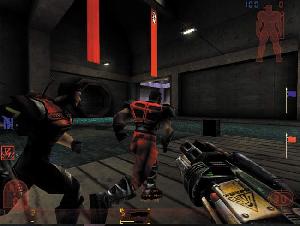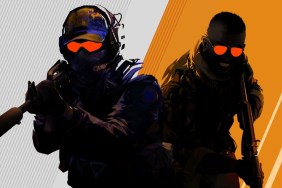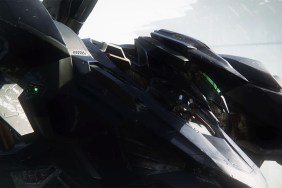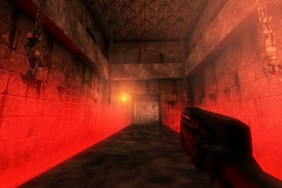“Ladies and Gentlemen… We Have a Winner!”
1999 is the year for pugilism. It is the year in which many genres have thrown
down their best gauntlets and the gaming public has watched in awe and anticipation,
waiting for the victor to emerge. Battling Bots ’99: the competition of Starsiege
vs. Mechwarrior
3 vs. Heavy
Gear 2. Real-Time Sequels ’99: matching Age
of Empires 2 vs. Total
Annihilation: Kingdoms vs. C&C
2: Tiberian Sun. These showdowns and others have sustained and entertained
the loyal masses all year. But one match, the final match, is just now raging
on gaming rigs ’round the world. That match, that quintessential bout and classic
David v. Goliath, is none other than Multi-Play FPS Fragfest ’99: Quake
3 Arena vs. Unreal Tournament. Members of the studio audience, viewers
around the world… a victor has emerged.
Unreal
Tournament, in no uncertain terms, is the best multi-player first person
shooter to come out all year. While there are other games that push hard on
the boundaries of traditional FPS gameplay such as Starsiege Tribes and
the upcoming Team Fortress 2, Unreal Tournament focuses on expanding
and refining more classic FPS gameplay instead of creating a whole new paradigm.
Even with that focus on keeping it familiar, Unreal Tournament is extremely
innovative, taking FPS Multi-Play to the brink of perfection without alienating
the massed legions of Quake fans.
UT includes 6 ways to play: Tournament Deathmatch, Tournament Team
Deathmatch, Domination, Capture the Flag, Last Man Standing, and Assault.
Tournament Deathmatch is traditional Deathmatch, pitting players with guns
& ammo against each other in an orgy of violence. Team Deathmatch groups players
into teams. Domination is a Team Deathmatch mode in which each team attempts
to hold on to three control points on the map – score is awarded to teams based
on the number of control points held and time of possession. Capture the Flag
is like the old kids game: teams face off, each has a flag and each attempts
to steal the other team’s flag and return it to their own base. Last man standing
assigns each player a certain number of lives, when the lives are exhausted,
the player is ‘out.’ The winner is the last player to remain alive.
Assault is another team-based mode that is sure to raise heads. It involves
two teams, one in control of a base that they must defend, and the other team
attempting to storm the base and accomplish some task. The tasks are varied,
such as invading an artillery position and detonating the massive gun or jumping
off a moving helicopter and taking control of a speeding train.
While that may seem a bevy of play options, it is merely the beginning of
the variety. Unreal Tournament allows you to vary the style of gameplay
from how fast people move to how much damage guns do. Beyond that, specialty
rules sets (called ‘mutators’) can be assigned to any level. Mutators can be
anything from ‘Chainsaw melee’ (self explanatory) to ‘Fatboy,’ a mode in which
players get larger as their frags go up. The sheer number of options and modifiers
that can be used in Unreal Tournament, combined with the large number
of gameplay modes, make for a game that is almost endlessly expansive.
All of these modes can be played either online or simulated in every detail
using a practice mode that places computer controlled opponents, called ‘bots,’
in place of humans. One of the most notable features of UT is the incredibly
good AI. Quite simply, the bots play like humans . . . like good humans.
Bots exhibit all the behavior of a skilled human player, except that they actually
follow your orders in the Team games. Bots are also highly configurable, from
one of eight pre-set difficulty settings to actually tweaking their favorite
gun, marksmanship, and other characteristics. To put it bluntly, no one has
ever programmed a better AI in a FPS than the UT bots; playing offline
just as much fun as playing online.
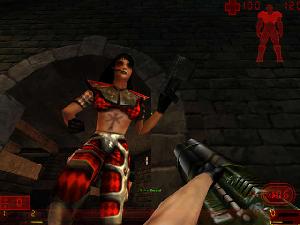 The
The
weapons in UT help to make it a far more intense, and subtle game than
most other FPSs. Every weapon has two fire modes whose effects complement each
other and make for some great combo moves. With two modes of fire, you are essentially
always equipped with two weapons, adding depth and intensity that was lacking
in Quake 3.
Graphically, Unreal Tournament is fine and based on the still-great
Unreal
engine. Unlike Quake 3, where the fun is dependent on the graphical quality,
the fun in UT is all in the gameplay. Architecture detail is not particularly
complex, player models are not particularly varied, and overall the game is
not actually as visually appealing as the original Unreal. Still, the
graphics are perfectly functional and carry the gameplay well.
Also, although the engine may be a little old, the gameplay maps are fantastic.
Unreal Tournament‘s 50-plus areas have you fighting on stratospheric
sky scrapers, spinning asteroids, ships in hyper-space, and even a Spanish Galleon.
In fact, Unreal Tournament has some of the best multiplayer maps in the
entire FPS genre.
Interface is yet another area in which UT excels. Epic Megagames (the
game’s designer) also made wise move in incorporating the Gamespy server-locating
software directly into Unreal Tournament, which makes finding a good
server a snap.
Add to that some excellent sound and smooth internet code, and you have a
serious winner on your hands. Unreal Tournament, by the thinnest of margins,
is not really a revolutionary game, but it is almost perfect at what it does.
This is the definitive straight multi-player first person shooter. It is an
amazing game that never fails to impress or entertain. No self-respecting action
gamer’s library is complete without Unreal Tournament. This is the undisputed
champion, choose it . . . there’s no reason to pick the consolation
prize.
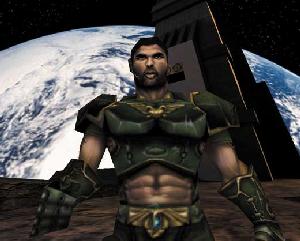
-
Older Graphic Engine
